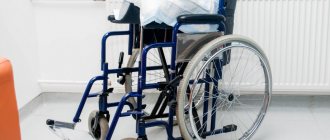If you experience a feeling of vomiting and feel dizzy, then this is a warning bell from the body, which indicates serious illness. Only a doctor can determine the cause of a pathogenic condition. Self-examination and self-medication will not lead to results. Treatment should be carried out using comprehensive measures.
Dizziness (vertigo syndrome) is a feeling during which a person feels that all objects are spinning around him.
Nausea is the stomach's desire to vomit.
What is dizziness?
True dizziness or vertigo is a condition during which patients have a feeling of rotation of surrounding objects around them or a false sensation of their own movement or rotation.
An example of true dizziness, but not in any way related to the disease, is the dizziness that appears in people after riding a carousel, when, after an abrupt stop, they continue to see the movement of surrounding objects relative to themselves, as if the carousel were still in motion.
In most cases, the occurrence of true dizziness is a symptom of diseases of the system of control of balance and body position in space. This system includes the eyes, the vestibular apparatus of the inner ear, and sensory receptors in the human muscles, joints, and bones. Very often, dizziness, which is caused by a disruption in the balance system, is accompanied by nausea and vomiting.
Causes of the pathogenic condition
Symptoms that are not due to disease.
If you suddenly feel dizzy and nauseous, do not be afraid. Usually the reasons for this condition are:
- a person spun on a carousel, swung on a swing, or was at a height for a long time;
- a person eats poorly, goes hungry and is on the wrong diet;
- thoughts are confused;
- stress and nervous environment;
- long stay in an unventilated and stuffy office;
- magnetic storms;
- taking medications and vitamins without consulting a doctor;
- got sick in the car;
- seasickness.
Causes of the pathogenic condition in girls.
Women have an unstable emotional and hormonal state, unlike men. They often go on diets, fast, and do fasting days to lose weight and maintain body shape.
As a result of such activities, their glucose levels decrease, frequent dizziness begins, digestive ailments worsen, and hair falls out, which leads to stress and depression.
Dizziness in women is possible only if they are pregnant, have recently been under stress, premenstrual syndrome is about to begin, or it is time for menopause.
Causes of nausea and dizziness associated with illness.
Severe dizziness and nausea lead to loss of coordination and balance. These anomalies indicate diseases:
- osteochondrosis of the cervical spine;
- injuries to the head, hearing organs and spine;
- migraine;
- inflammation of the middle ear (labyrinthitis);
- episyndrome;
- Meniere's syndrome;
- disruption of the circulatory system of the brain;
- brain tumors;
- alcohol intoxication;
- spinal cord diseases;
- infections and meningitis;
- perilymphatic fistula;
- stroke.
An ambulance should be called if the patient, in addition to nausea and dizziness, experiences:
- fainting;
- vomit;
- elevated temperature;
- cardiopalmus;
- tingling hands;
- darkening of the eyes;
- ears began to hear poorly;
- dizzy after lying down for more than an hour;
- grainy image;
- pallor.
Pathogenic condition due to vegetative-vascular dystonia.
Staggering while walking, objects that “float”, nausea, anxiety, confusion of thoughts, a feeling of extreme hunger and lack of oxygen in the brain (the head is pressed from all sides) and dizziness are indicators of vegetative-vascular dystonia.
When you suddenly and abruptly change your body position, you begin to feel dizzy for a short period of time, and your health worsens due to the fact that the vessels do not have time to deliver a sufficient volume of blood to the brain.
Causes of pathogenic conditions that occur in the dark
. Systems such as the visual, vestibular, proprioceptive, and cerebral systems collectively regulate our balance. But if at least one of them has a disruption in the functioning of the organ, then dizziness will begin at night.
Causes of the pathogenic condition in a patient with diabetes mellitus.
During attacks, a patient with diabetes experiences chills, dizziness and nausea. This can lead to fainting or even coma. To avoid such symptoms, you need to get tested in advance, take the right amount of insulin or take medications, follow your diet and measure your sugar more often.
What to do if you feel dizzy and feel nauseous
Independent actions in case of dizziness and nausea:
- do not make quick movements, restore breathing;
- look at one specific object;
- drink cold water with a small piece of sugar;
- in case of strong emotional stress, drink a sedative or tea with oregano or chamomile;
- when your blood pressure drops, drink strong brewed black tea with chocolate (important: green tea, on the contrary, lowers blood pressure);
- if you have hypoglycemia (diabetics), eat candy with a lemon or mint flavor, or a piece of sugar, wash it down with warm tea;
- go outside or ventilate the room;
- if you start to feel very sick and everything around you is spinning, then you need to bend over and let your head go between your knees.
If the advice does not help, immediately call 003.
Symptoms other than dizziness
As can be seen from the above, the term “dizziness” has a rather narrow medical interpretation (a false sensation of rotation of surrounding objects or one’s own rotation). But, despite this, people also use this term to refer to other symptoms that are not actually dizziness. So, most often “dizziness” is called such phenomena as:
- darkening in the eyes after abruptly rising to your feet from a sitting or lying position;
- a veil before the eyes;
- feeling of imminent loss of consciousness (fainting);
- weakness, nausea, feeling of confusion and unsteadiness in the legs;
- feeling of unsteady gait and impaired balance.
When a person suffering from dizziness comes to see a doctor, he should describe his condition, how he is feeling and the symptoms he is experiencing as accurately as possible, and not simply say that he suffers from “vertigo.” The further examination and treatment plan will depend on the accuracy of the description of the existing symptoms.
In contrast to true dizziness, which appears due to a disruption in the functioning of a person’s balance system, false dizziness, which patients describe as a feeling of weakness, instability, darkening in the eyes, blurred vision, etc., can most often be a sign of anemia, chronic fatigue , hypovitaminosis, hypotension and vegetative-vascular dystonia. In addition, fainting, episodes of lipothymia (a sharp decrease in muscle tone with great physical stress) and short-term attacks of epilepsy can also be confused with dizziness.
We pay special attention to attacks of sudden dizziness and weakness in people who have diabetes. In this category of patients, dizziness and weakness may indicate a dangerous decrease in blood glucose levels.
How does the human balance system work?
In most cases, true (central, systemic) dizziness is a manifestation of various diseases of the system that provides balance and control of body position in space. This system consists of the following 3 components:
- The vestibular apparatus, which is located deep in the skull, where sensitive receptors are located that respond to the angular or linear acceleration of the body in space.
- Eyes that provide visual information about the location of the body and its parts in space, as well as in relation to other objects.
- Sensitive receptors (proprioceptors) that are found in human bones, joints, muscles and ligaments. They provide reliable information about the position of body parts in space, as well as relative to each other.
All these 3 components of the balance system simultaneously send information to the brain, where it can be analyzed and processed into a person’s idea of his position in space and relative to other objects.
If for any reason the data that comes from one of the sources is distorted (for example, irritation of the receptors of the vestibular apparatus by an inflammatory reaction when there is no movement and acceleration), then an incorrect idea is created in the brain about the position and movement of the human body in space . Then an illusory sensation of movement or rotation arises, when in reality the body is motionless.
The causes of a disorder in a person’s balance system can be very different. Nowadays, more than 80 diseases are known that can cause dizziness. Below we describe the most common causes of dizziness.
Dizziness: the most common causes and forms
According to modern research, most often this disease is a symptom of diseases such as:
- BPPV (benign paroxysmal positional vertigo);
- basilar migraine;
- psychogenic dizziness;
- Meniere's disease;
- osteochondrosis of the cervical spine, as well as vertebrobasilar insufficiency;
- vestibular neuritis;
- brain tumors.
Note that BPPV accounts for more than 80% of cases of true dizziness. Below we will consider the main diseases that are accompanied by dizziness, and also describe the characteristics of dizziness in each case.
1. Benign paroxysmal positional vertigo is one of the most common forms of true vertigo. The name itself is deciphered as follows: “benign” means a favorable, harmless course of the disease, “paroxysmal” means the sudden onset of dizziness; “positional” - the appearance of dizziness when turning the head in a certain direction.
The reason for the development of BPPV is irritation of the receptors of the vestibular apparatus by otolith stones, which are located in the semicircular canals of the inner ear. This disease can also occur spontaneously in a person of any age, but in most cases it appears in people over 50-60 years old, after an injury or infection.
The main symptoms of benign positional vertigo are:
- the occurrence of severe dizziness when tilting or turning the head, when turning in bed, when throwing the head back;
- severe dizziness lasts from several seconds to several minutes, and it may be accompanied by weakness, severe nausea or vomiting;
- attacks of dizziness can appear in series, after which they disappear without a trace for some time.
Treatment of BPPV is carried out with a special exercise, and always under the supervision of a neurologist. Its duration is only 1-2 minutes, and its effectiveness reaches 90%.
2. Dizziness with migraine. Migraine is one of the most common types of headaches. In some cases, during a migraine attack, blood circulation is disrupted in the areas of the brain that control the functioning of the vestibular apparatus, which causes severe dizziness, after which a severe headache in the back of the head may immediately develop, imbalance may occur, vomiting, noise and light intolerance may occur. . Some people with migraines may only have severe dizziness and nausea, but no headache. In children, one of the precursors of migraines in adulthood are attacks of severe dizziness, imbalance, nausea, vomiting, which over time turn into typical migraine attacks.
3. Psychogenic dizziness ranks second in prevalence after BPPV. But unlike it, psychogenic dizziness is not true dizziness, since it is not associated with disturbances in the functioning of the vestibular apparatus.
The main characteristics of this disease:
- description of dizziness as a feeling of fog in the head, confusion, fear of falling and losing consciousness, but not as one’s own spinning or other objects;
- attacks of dizziness occur spontaneously, often under stress, in a confined space (transport, elevator), as well as in crowded places;
- in addition to dizziness, patients have other complaints that resemble some diseases of the internal organs: a lump in the throat, soreness, pain in the chest, abdomen or in the heart area, pain and tension in the muscles, a feeling of lack of air, a feeling of tension and internal fear, anxiety, irritability, anxious sleep, strong and unreasonable concern about one’s own health, as well as the health of loved ones, etc.
Psychogenic dizziness can also be considered one of the most common manifestations of VSD (vegetative-vascular dystonia). Particularly often, attacks of false dizziness can be observed in patients with anxiety disorders and panic attacks.
Determining the psychogenic nature of dizziness plays a big role in determining the correct treatment, so if you have an idea that dizziness in your case may be psychogenic, we recommend that you study information about vegetative-vascular dystonia, as well as its treatment.
In particular, with psychogenic dizziness, treatment that is intended for VSD (sedatives, psychotherapy) will be much more effective than specific drugs for dizziness, prescribed for all cases of true dizziness.
4. Dizziness with Meniere's disease. This disease is characterized by periodic attacks of severe dizziness and deafness (usually in one ear), gradually leading to hearing loss.
At the moment, the exact cause of Meniere's disease is still unknown. But there are suggestions that in some cases it may be caused by injury, viral infections or allergies.
A typical manifestation of Meniere's disease is an acute attack of severe dizziness, which lasts several hours or days and is accompanied by nausea, vomiting, tinnitus, hearing loss (in one ear) and a feeling of pressure inside the ear.
Typically, attacks of this disease appear one after another over several weeks, after which they disappear for some time, but then begin again.
5. Dizziness due to osteochondrosis, as well as vertebrobasilar insufficiency, neck and head injuries. As we have already said, the work of the human balance control system involves sensitive receptors of the muscles, bones, joints, ligaments of the whole body and mainly the muscles, bones and ligaments of the neck.
Degenerative diseases of the cervical spine, including osteochondrosis, are one of the most common causes of dizziness, which patients often describe as unsteady gait and rarely as a feeling of spinning.
Osteochondrosis of the spine disrupts the functioning of the sensory receptors in the neck, and can also cause disruption of blood circulation in the vertebral arteries, which supply blood to the parts of the brain responsible for balance and maintaining the body, located in the brain stem.
Chronic circulatory disorder in the lower parts of the brain (vertebrobasilar system) is called vertebrobasilar insufficiency. Atherosclerosis of the neck vessels and long-term hypertension (increased blood pressure) also play a certain role in its development. Most often, vertebrobasilar insufficiency occurs in older people. In addition to dizziness, it is accompanied by symptoms such as memory loss, headaches (mainly in the back of the head) and tinnitus.
Attacks of acute circulatory disorders in the vertebrobasilar region can manifest as severe dizziness, loss of consciousness, vomiting, weakness and double vision.
Injuries to the head and cervical spine (especially after car accidents) can also cause dizziness. In such cases, it is usually more pronounced in the first days after the injury and gradually decreases as the patient rehabilitates.
6. Dizziness with vestibular neuritis. This disease is an inflammation of the vestibular nerve, which carries impulses from the receptors of the inner ear to the brain. When the vestibular nerve becomes inflamed, it temporarily loses its ability to conduct impulses. This, in turn, is manifested by severe dizziness, unsteady gait, nausea and vomiting.
The main cause of vestibular neuritis is viral infections, so attacks of associated dizziness may be accompanied by weakness, fever, cough or runny nose.
7. Dizziness due to brain tumors. Some brain tumors that are located near the inner ear can cause severe and progressive dizziness.
Symptoms of a tumor, in addition to dizziness, may include the following phenomena:
- hearing loss (usually one ear);
- nausea;
- tinnitus, hearing loss;
- headache;
- the appearance of strabismus, paralysis of the facial muscles.
Dizziness as a symptom of a brain tumor is most often observed in young people and children.
Dizziness and tinnitus
S.Ya.Kosyakov, G.Z.Piskunov Dizziness
Introduction
Dizziness is a general term that characterizes a large number of symptoms.
In general, it means a pathological sensation of movement, it can also mean imbalance, lightheadedness, darkening of the eyes, disorientation, weakness and other sensations. Symptoms can vary in intensity from mild and short in duration to severe attacks of rotation accompanied by nausea and vomiting. To more accurately define symptoms, the following definitions are used: Dizziness:
a general concept describing symptoms of imbalance and stability.
Balance problems:
Difficulty maintaining balance, especially while standing and walking.
Presyncope:
A feeling of being “switched off”, similar to the sensation that occurs when holding your breath for a long time.
Systemic dizziness:
sensation of rotation, spinning, twisting of surrounding objects.
The ability to maintain balance is the result of a complex interaction of various organs and systems. The brain is the main center for processing all information about balance coming from the senses to the muscles that maintain balance. Information in the form of nerve impulses comes from the main systems: visual, vestibular, proprioceptive and tactile (joints and feet). Visual information is the most important for the brain and signals movement in relation to surrounding objects. Anatomy
There are two components of hearing: mechanical and electrical (neural).
The mechanical component ensures the delivery of sound waves through the external auditory canal, the movement of the eardrum and the three auditory ossicles in the middle ear. The inner ear is represented by a cochlea, consisting of two halves connected to each other and filled with liquid. The cochlea is responsible for the electrical component of hearing and converts a mechanical signal into an electrical one, which in turn goes to the brain. The other part of the inner ear is responsible for balance and the vestibular system. The three semicircular canals are located in mutually perpendicular planes. Depending on the direction of movement of the head, the fluid moves in the channels, the resulting electrical impulse is transmitted to the brain through the vestibular nerve, transmitting information about the direction of movement. The fluid in the inner ear is renewed daily. Its source of origin is cerebrospinal fluid, absorption occurs in the endolymphatic sac. In Meniere's disease, the absorption capacity of the endolymphatic sac deteriorates. Increased pressure in the inner ear leads to dizziness and decreased hearing. The facial nerve exists in close relationship with the ear. The facial nerve carries out movements of the facial muscles and allows the tip of the tongue to distinguish taste. When it is affected, the eye closes poorly, fluid pours out of the corner of the mouth, and facial movements on the affected side are impossible. Balance function
The balance function is ensured by the interaction in the brain of nerve impulses coming from the inner ear, neck muscles, muscles and joints of the lower extremities.
Disturbances in any of these systems can lead to a subjective feeling of dizziness and instability. General problems with body functions (such as low or high blood pressure, nearsightedness, and many others) can lead to dizziness by affecting the coordination of impulses in the brain. The brain's response to distorted or inconsistent impulses can lead to false sensations of movement (dizziness), which in turn leads to unsteady gait and falls. Dizziness is often accompanied by cold sweats, nausea and vomiting. Visual and muscle and joint signals (tactile and proprioceptive) to the brain warn us that we are moving on the right path or that our head is tilted. The brain interprets this information along with information from the vestibular system and gives the appropriate command to the muscles to maintain balance. Dizziness occurs when sensory information is distorted. Some people experience dizziness when they are in a high place, for example. This is partly due to the inability to focus on nearby objects. While standing on the ground, a person may sway slightly. A person maintains balance, identifies his body position relative to something. When standing in a high place, it is difficult for a person to correlate the position of his body relative to objects in the distance and, accordingly, it is more difficult to maintain balance. As a result, anxiety, fear, and dizziness may occur, which sometimes forces the person to sit down. There is an opinion that motion sickness, a disorder that occurs during sea motion, in a car, or in flight, occurs when the brain receives conflicting sensory information about the movement and position of the body. For example, when reading while driving in a car, the inner ear perceives the movement of the vehicle, but the gaze is fixed on a stationary book that does not move. As a result, sensory conflict can lead to typical symptoms of motion sickness, dizziness, nausea, and vomiting. Another form of dizziness occurs when you spin repeatedly and suddenly stop. Rotation causes movement of the endolymph. The movement of the endolymph causes impulses, which in turn tells the brain that we are moving, but other sensory systems report that we have stopped, so the patient feels dizzy. Causes of Dizziness
Dizziness can be classified into types depending on the part of the vestibular system that is not working properly.
Disturbances can occur at the level of the inner ear, brain, eyes and limbs (muscles of the back, neck, legs and joints that react to maintain our position). Dizziness due to the inner ear
Part of the inner ear (cochlea) is used for hearing, the other part is used for balance (labyrinth).
If there are disturbances in the labyrinth or in the nerve connecting it to the brain, this leads to dizziness. Various types of disorders in the inner ear can lead to vertigo, including Meniere's disease, labyrinthitis, positional vertigo, vestibular neuronitis, and nerve tumors. These disorders typically cause problems with balance, a sensation of spinning objects, and nausea. Also, these phenomena may be accompanied by tinnitus and hearing loss on the corresponding side. Dizziness of a central nature
The cause of dizziness of a central nature is usually a disturbance in the area of the brain responsible for balance.
Symptoms may include lightheadedness, confusion, unsteadiness, and sometimes loss of consciousness. Causes of central vertigo include low blood sugar, low blood pressure, stroke, multiple sclerosis, migraines, head injuries, tumors and age-related changes. Treatment of this type of dizziness is usually associated with the elimination of problems leading to disruption of brain function. Muscular-articular dizziness
This type of dizziness is rare.
If there are diseases of the muscles, joints, or the sensitivity of the lower extremities is impaired, then difficulties arise in the body’s reaction to movement and in maintaining an upright position. Musculo-articular dizziness can be caused by: atrophic changes in muscles (muscular dystrophy), severe forms of diabetes, arthritis, joint implantation and trauma. Symptoms: Typically unsteadiness and poor balance. Visual dizziness
Unsteadiness of the eye muscles and poor vision can impair balance function.
The brain relies on visual information to maintain balance. Motion sickness in a car or at sea are examples of visual vertigo because the eyes are constantly fixated on a moving object and “confuse” the vestibular part of the brain. This leads to dizziness, nausea and vomiting. Dizziness is not a fatal condition and may improve with treatment, but balance problems may remain. Diagnosis of dizziness
Dizziness can be caused by various disorders in the body.
Based on the medical history and examination data, the doctor selects the required scope of examination to obtain a more complete picture of the disease. The usual set of examinations includes testing of hearing and vestibular function, computed tomography and nuclear magnetic resonance, blood tests, and ultrasound examination. The most commonly used test for dizziness is electronystagmography (ENG). This test measures inner ear endurance and eye coordination. The method involves observing eye movements while cold and warm air is blown into the external auditory canal. This usually causes a brief feeling of dizziness. It is important not to take medications before the test that could affect the test results (for example, Valium, alcohol, etc.). When ordering such an examination, it is necessary to find out from the doctor the effect of the medications taken on the test results. Transcranial Doppler sonography is another test specific for the examination of dizziness of vascular origin. It is a safe, quick way to see disturbances in blood flow in the parts of the brain responsible for balance. In addition, a computed tomography (CT) scan of the temporal bones and, in some cases, magnetic resonance imaging (MRI) may be performed. The purpose of these examinations is to achieve confidence in the absence of a life-threatening pathology and to determine the exact location of the disorder. This is the basis for effective treatment. The scope of the examination is determined by the doctor in each specific case. Several tests are necessary to diagnose the cause. Perseverance and understanding are necessary for both the doctor and the patient, which is also the basis for effective treatment. The most common types of vertigo Benign paroxysmal positional vertigo (BPPV)
BPPV is the most common type of vertigo.
With this disease, dizziness occurs only when the head position changes (usually when turning in bed, tilting the head backwards or forwards). This type of dizziness is caused by microcrystals that float in the fluid of the inner ear and cause a spinning sensation. The most common cause of BPPV is head trauma or viral infections, but sometimes it begins without any obvious cause. Treatment for BPPV consists of certain exercises to return the crystals to a place where they will not cause dizziness. When left at rest in a certain position for 48 hours, they often lock into place. Exercise may reduce symptoms. If these actions are ineffective, then surgical treatment (for example, occlusion of the posterior semicircular canal) may be necessary. Vestibular neuronitis
Neuronitis (nerve inflammation) usually occurs due to a viral infection and can affect the balance centers or the vestibular nerve.
When this happens, the balance centers in the brain are overstimulated, resulting in significant imbalance and systemic dizziness. Fortunately, vestibular neuronitis usually subsides over time and does not recur. Drugs such as betaserc help in the initial stage and reduce the severity of the main symptoms; later, vestibular rehabilitation exercises can speed up the recovery process. In some cases of persistent disease, surgical treatment is recommended. Meniere's disease (Endolymphatic hydrops)
Meniere's disease is a consequence of disorders in the inner ear due to increased pressure in the endolymphatic space.
This is usually due to increased sodium concentration in the fluids of the inner ear. In addition to imbalance that lasts for hours, patients may experience hearing fluctuations, tinnitus, and a feeling of fullness in the affected ear. Sometimes the lesion affects both ears. The full cause of this disorder is not fully known. Sometimes attacks can be caused by excessive salt intake, anxiety, changes in weather, and other reasons. Treatment usually includes limiting salt intake and using diuretics, fluid restriction, sedatives and some other vestibular suppressants. Betaserc is the only drug created for long-term treatment of dizziness. Treatment helps reduce the severity of attacks, but complete cure of the disease cannot be achieved. Vestibular rehabilitation exercises can speed up the recovery process and increase the patient's resilience to vestibular disorders. All prescriptions of drugs should be carried out only by a doctor. For severe cases of Meniere's disease, surgical treatments are available. The list of these methods is long and more often they are destructive in nature for the structures responsible for balance. Vascular vertigo
The correct functioning of the balance system requires not only the flow of information into the inner ear, but also the appropriate transmission of impulses along the nerves to the brain.
If there is not enough blood flow to the areas of the brain responsible for balance, even for a short time, dizziness can occur. The causes of vascular dizziness are different. The phenomena of osteochondrosis in the cervical spine can lead to compression of the arteries leading to the brain; atherosclerotic plaques can narrow the arteries, also causing a decrease in blood flow. Often, blood pressure in the vessels leading to the brain may temporarily decrease when standing up suddenly, especially in older patients receiving blood pressure-lowering medications. Special examinations such as MRI or Doppler sonography help in diagnosing such diseases. Another rather rare cause of dizziness is Perilymphatic Fistula
. The inner ear is a space filled with fluid located in the temporal bone.
If fluid leaks from the structures of the inner ear, hearing loss may occur, which may be greater or less, and dizziness. Most often, fluid leaks through the membranes of the windows of the inner ear, which can occur after physical activity or injury. In some cases, there are congenital disorders that characterize an enlarged connection between the inner ear and the brain ("enlarged vestibular aqueduct"). Sometimes this can be seen with a special x-ray examination - computed tomography. Sometimes the site of the membrane rupture heals on its own, sometimes minor surgery is required. A perilymphatic fistula, or as it is also called, a labyrinthine fistula, can occur as a result of chronic inflammation of the middle ear, especially with cholesteatoma. Cholesteatoma is compacted skin scales. If there is a hole in the eardrum, the skin grows into the cavity of the middle ear, and its metabolic products, like the formation of a pearl, form a lump of cholesteatoma, which presses on the walls of the middle ear cavities and destroys the bone, in particular, the semicircular canal. Therefore, the treatment of chronic otitis media is very important, and when the hole is localized in the upper part of the eardrum (epitympanitis), it must be surgical, because Most often, cholesteatoma is found in these cases. Tumors
Rarely, tumors may be the cause of dizziness.
Most tumors are benign. Acoustic neuroma is a benign tumor of the vestibular nerve. The presence of a neuroma can lead to instability, hearing loss and noise. The most effective treatment method is surgery. Treatment of dizziness All questions regarding the treatment of dizziness and, in particular, taking medications should be discussed with your doctor.
Treatment in each specific case is selected individually and depends on age, severity of dizziness, concomitant diseases and many other factors.
Ear noise
Ear noise is a very common symptom.
The noise can be constant or periodic, of varying severity and frequency. The noise can be subjective (audible only to the patient) or objective (audible to others), and may or may not be associated with hearing loss. Noise is a symptom and not a disease and can occur in various diseases, such as pain in the arm or leg are symptoms of various diseases. Noise appears when the auditory nerve is irritated for various reasons. The noise may or may not be accompanied by hearing loss. Hearing is measured in decibels (dB). A hearing level of 0 to 25 dB is considered normal for the perception of spoken language. Hearing mechanisms
to understand the possible causes of noise in the ear, it is necessary to have some idea of hearing mechanisms.
The mechanism of auditory perception is provided by the five main components: the outer ear, the middle ear, the inner ear, the paths and the brain. The outer ear
of the outer ear consists of an auricle and an external auditory pass.
These structures collect sound waves and transmit them to the eardrum. middle ear
is located between the eardrum and the inner ear.
This space contains three auditory bones: a hammer, an anvil and a stirrup. The fluctuations of the eardrum are transmitted through the auditory bones on the liquid of the inner ear. The middle ear lined with the mucous membrane is identical to the nose and contains mucous glands and blood vessels. The drum cavity is connected to the rear parts of the nose using the Eustachian pipe. Eustakhiev’s pipe is served to maintain equal pressure between the middle ear and the outer atmosphere. The feeling of clicking or congestion when height changes is a demonstration of the ventilation function of the Eustachian pipe. The inner ear
in the inner ear is in a dense bone capsule and contains liquids and auditory cells.
The cells are covered with delicate membrane with microscopic blood vessels. In the inner ear, fluctuations in the fluid as a result of the movements of the stirrup, are converted into electrical impulses in the nerve. Electric impulses arising in the inner ear are transmitted to the brain along the auditory nerve. The auditory nerve going into the brain is located in a small bone channel along with the vestibular and facial nerve. The brain
of the auditory nerve by reaching the brain is divided into many internal connections.
In the brain, nerve impulses are recognized as recognizable sounds. Ear noise,
most ear noise are heard only by patients - this is a subjective noise.
The noise that the patient himself hears, and someone is also called objective. Objective noise can be as a result of muscle cramps in the middle ear or auditory pipe, or due to anomalies of blood vessels of the surrounding the ear. Ear noise of muscle nature,
noise can be the result of muscle spasm attached to one of the auditory bones or the result of a spasm of muscles attached to the auditory pipe.
In the middle ear, there are two muscles: a stirmer that is attached to the stirrup and muscle pulling the drum overlain attached to the hammer. Usually these muscles quickly decline in response to loud noise or at fear. Sometimes one or two of these muscles begin to rhythmically contract for no apparent reason. These abbreviations can cause repeated noise in the ear. An annoying clicking usually passes on its own. The ear noise of muscle nature as a result of a spasm of various muscles of the pharynx is quite rare, but sometimes it can be if muscle spasm is long, then drug treatment (muscle relaxants) or surgical treatment (intersection of spasmodic muscles) is used. The ear noise of vascular nature
has two large blood vessels closely related to the middle and outer ear: jugular vein and sleepy artery.
These are large blood vessels supplying the brain with blood and carrying out its outflow. To hear your own heartbeat or noise of blood passing through these large vessels is not a normal phenomenon. Sometimes this phenomenon can occur at high temperature, infection of the middle ear, after intense physical activity. The noise of circulation in these situations is temporary and is not heard by others. Sometimes the noise of blood circulation becomes heard by another. This can happen due to the thickening of the wall of the blood vessel, the presence of bending or narrowing in the vessel. Further examination is necessary to identify the cause and choose the treatment of this pathology. Ear noise due to the outer ear
is the closure of the external auditory passage with a gray, foreign body, edema is leading to a decrease in hearing and pressure on the eardrum.
Often this leads to a pulsating type. Ear noise due to the middle ear,
impaired function of the middle ear may be the result of an allergic reaction, infection, injury, cicatricial changes and limitations of the mobility of the auditory bones.
These disorders often lead to hearing impairment and ear noise. However, there is no direct dependence between the degree of hearing loss and noise intensity. Ear noise due to the inner ear
any condition that violates the balance of fluid pressure in the inner ear can lead to an ear noise.
This may be the result of an allergic reaction, infection, circulatory disorders, which lead not only to changes in the liquids of the labyrinth, but also in the membrane structures of the inner ear. Ear noise due to damage to the tracking paths,
the most delicate structures of the mechanism responsible for the hearing.
Hair cells convert fluctuations in the fluid into nerve impulses. The most insignificant edema and violation of interference in the hair cells, regardless of the cause, lead to function and irritation. This can happen for various reasons: an allergic reaction, infection, edema, systemic diseases, both acute and chronic, toxic effects, sudden loud sounds and sensitive subjects, injuries, the effects of medications, minute changes in blood supply and diet changes. Pressure changes can cause swelling both outside and inside the nerve when passing in the bone tunnel to the brain. In these cases, ear noise occurs on one side. Because The bone tunnel cannot stretch, then due to compression, not only the auditory and vestibular functions suffer, but also the facial nerve. The gap or spasm of a small vessel that occurred somewhere in the auditory path causes compression and violation of circulation. Accordingly, under such conditions, a sudden noise may occur with complete or partial loss of auditory function. If the blood clot, then it can resolve with minimal consequences. Auro noise of brain nature
as a result of edema, pressure or circulation disorders for hypertension, atherosclerosis, as a result of the consequences of injuries, one or more complexes of the passing paths at the entrance and end of their brain can be involved.
In such situations, symptoms are usually localized on the one hand, in addition, the development of symptoms and signs can tell the doctor the place and prevalence of the lesion. The ear noise accompanying the decrease in
ear noise can be associated or not with hearing impairment.
With the coexistence of ear noise and hearing loss, the intensity of ear noise is not an indicator of the further development of hearing loss. Many patients with the advent of ear noise are afraid of the progression of hearing loss. However, these are often not interconnected things. All issues of ear noise treatment should be discussed with your doctor.
Thus, the treatment of dizziness and ear noise is a difficult task, which is possible only by the joint efforts of the doctor and the patient. High -quality hearing diagnosis plays a very important role in such a treatment. The sequence in identifying the causes of these conditions, in treatment and rehabilitation is an integral condition for achieving success.
Dizziness during pregnancy
False dizziness (a feeling of weakness, instability, near fainting) is very often observed during pregnancy. Attacks of dizziness in such cases are usually associated with hypotension, as well as a decrease in blood glucose concentration. We bring to your attention the following recipe, which is an effective method of treating dizziness during pregnancy:
In a mug of warm, boiled water, you need to dissolve 1-2 tbsp. l. sugar and drink immediately after waking up or before leaving the house.
Pregnant women (especially during the first half of pregnancy) should always carry water with them, and at the first sign of dizziness, try to drink as much as possible.
Cases when you should consult a doctor immediately
You should consult a doctor as soon as possible in cases where dizziness is accompanied by the following symptoms:
- increased body temperature;
- persistent vomiting;
- severe headache, weakness of arm or leg muscles;
- severe dizziness lasts more than an hour;
- during an attack of dizziness the person lost consciousness;
- when dizzy, the patient fell and was seriously injured;
- A patient with diabetes mellitus and hypertension developed severe dizziness.
Head spin
Probably, each of us at least once in our lives experienced dizziness, noise or ringing in the ears, and even more so, nausea.
But if these symptoms:
- are combined without obvious reasons (trauma, poisoning, etc.);
- periodically repeat, intensifying (even if this periodicity occurs once a year, then it may be more often);
It makes sense to see a doctor. You may be experiencing Meniere's disease.
In simple terms, this is a disease of the inner ear when fluid begins to accumulate in the parts of the inner ear called the labyrinth (where the parts responsible for balance and the cochlea are located).
This may be due to many reasons:
- metabolic disorders, namely water-salt balance;
- vascular disorders;
- genetic autoimmune conditions;
- complication of a viral infection;
- allergic diseases.
General – only the main symptoms:
- dizziness;
- noise, ringing and/or fullness, mainly in one ear;
- hearing loss.
They should be alert first!
There may also be: nausea, vomiting, sweating, disruption of the cardiovascular system, fear of light and sound, inability to focus on one object.
These symptoms occur in attacks that sometimes last several hours, sometimes up to 12.
Several years may pass after the first one, therefore, once faced with the manifestations of Meniere’s disease, a person may put off visiting a specialist about this for a very long time. Like, just think, my head was spinning, my ears were ringing... it doesn’t happen to anyone. Until the attacks become frequent (even daily) and begin to significantly worsen the quality of life. They are very difficult to bear! Finally, deafness can be a consequence of Meniere's disease.
Diagnosis of dizziness
Diagnosis and treatment of dizziness is carried out by neurologists, vertebrologists, otorhinolaryngologists and ophthalmologists. In order to clarify the cause of dizziness, as well as prescribe the correct treatment, a patient with dizziness must undergo a series of examinations:
- Doppler ultrasound of the main arteries of the head;
- examination by an ophthalmologist;
- audiographic examination;
- CT (computed tomography) or MRI (magnetic resonance imaging);
- X-ray of the skull and cervical spine.
Diagnostics
The doctor clarifies all the symptoms, their frequency, asks about your diet and sleep patterns, and how often you are in stressful situations. Asks about head, hearing, and vision injuries; do you take vitamins and medications, drink alcohol, and about the pace of life.
After all clarifications, the doctor refers to:
- blood analysis;
- echocardiography;
- electrocardiography;
- CT (computed tomography);
- MRI of the brain (magnetic resonance imaging);
- radiography;
- vestibulometry;
- audiography;
- electroencephalogram;
- Ultrasound.









